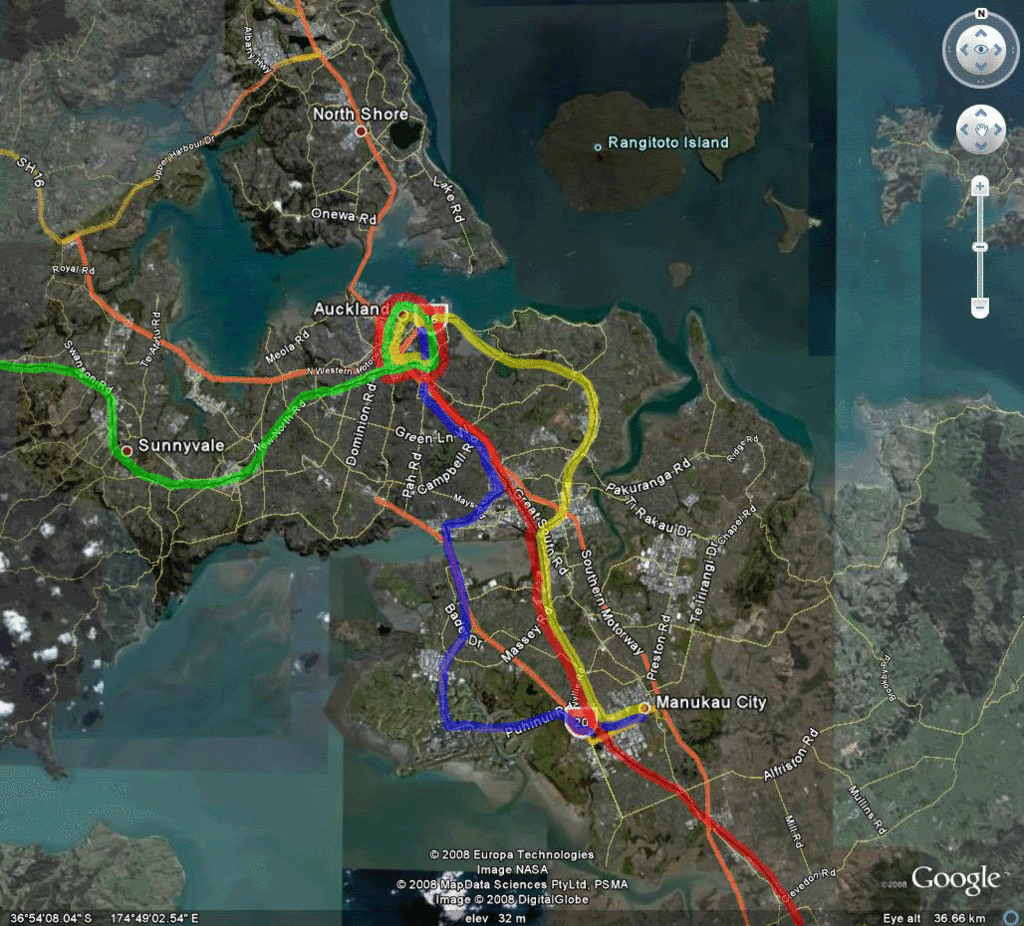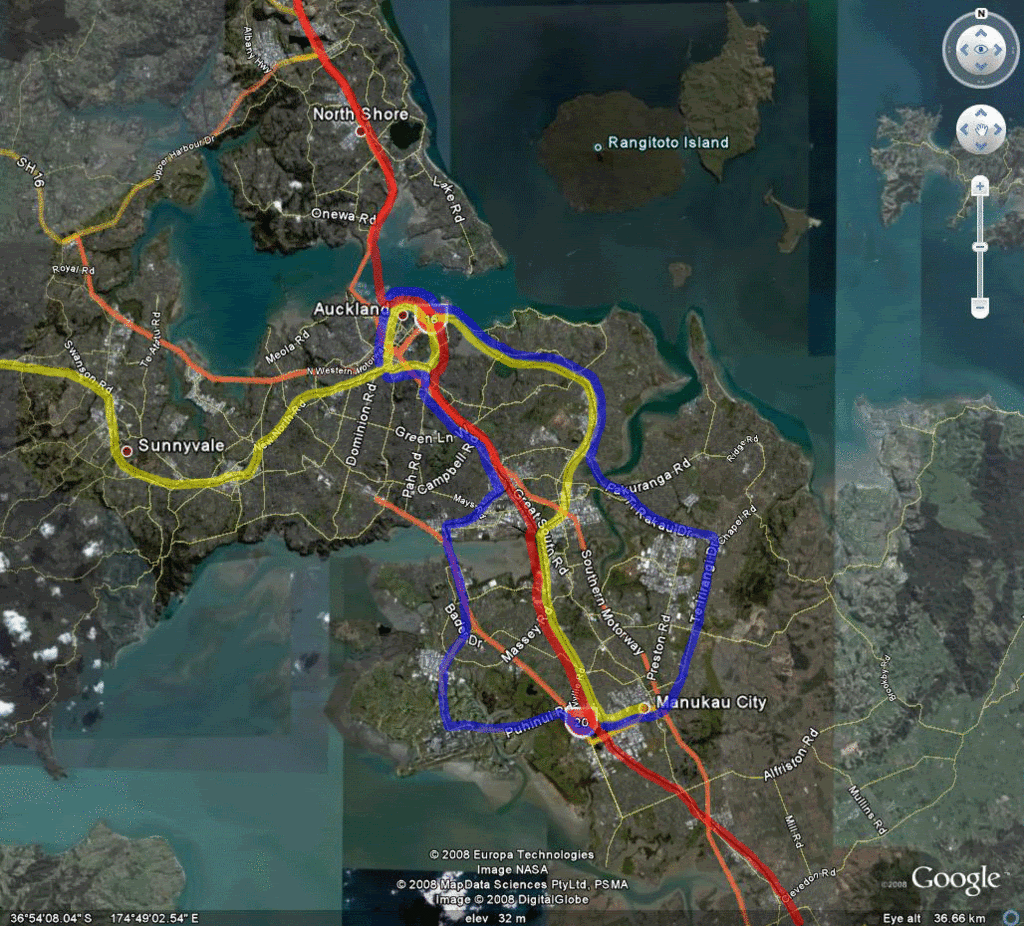To continue on from my previous post, we now take a step into a bit of the unknown. I will probably continue to change my mind about the best way for Auckland’s rail future versus the most realistic way to actually get change in my head for a fair while yet, but I guess this is a bit of a mixture: somewhat ideal, somewhat realistic.
The first stage is probably about 10 years down the track. In my opinion, planning for these improvements need to either start (in the case of the CBD loop) or be refined (in the case of rail to the airport) now. I’ve talked a lot about the CBD loop in previous posts, so I think it’s fairly obvious why this is such a crucial project. The airport loop is obviously also important (Mike Lee enjoys saying that we’re not a true international city until we have trains to the airport), but I think it’s less important than the CBD loop, and would have to happen after the loop to ensure the existing system doesn’t grind to a complete halt.
In this system we see the Onehunga Line being extended all the way to Manukau City, via the airport. This would be a pretty big project, but I think access from the airport to both Onehunga and Manukau City is pretty important. It means that trains don’t have to “turn around” at the airport too. This line has been studied quite a bit in recent times by ARTA, which confirms heavy rail as the preferred method of providing public transport to the airport. The study also proposes that the airport line be extended from Onehunga through to Avondale – but I think it’s a pretty unnecessary extension as passenger numbers wouldn’t justify it. The Avondale-Southdown line (as it’s known) will probably be built for freight at some point (so it can bypass Newmarket), in which case the line might as well also be used for some passenger services, but it’s not needed nearly as much as other projects.
The other main project at this stage would be the CBD loop – which after electrification is THE MOST IMPORTANT PROJECT FOR AUCKLAND. I would run the three existing lines in loops, returning them to where they came from and therefore offering great access to the CBD. Lines might vary as to whether they go clockwise around the loop or anti-clockwise, although the eastern line would HAVE to go anti-clockwise, while the southern line would probably also go that way (so people don’t have to go the LONG way around to get to Britomart). More on the CBD loop another time.
OK, so next we have the ‘ultimate stage’, which is realistically 20 years away. This involves two major projects (I probably can’t emphasise how much they’d be enough): the North Shore Line and an East Tamaki Line.
The North Shore Line would involve converting the current busway so that it could cater for heavy rail. This would mean quite a lot of earthworks to ensure that the gradients weren’t too steep, and also would obviously involve digging a tunnel under the Waitemata Harbour to link the converted busway with Britomart. This has been costed at around $1.5 billion I think.
The East Tamaki Line is only really a dream at the moment. It represents fixing what I think is Auckland’s greatest failure: allowing so much development east of the Tamaki River without building a railway line to serve the area. There is no designation for rail through here, so it would be enormously disruptive putting a line through. Light-rail or busway options may be more realistic. It’s a nice dream though.



 Processing...
Processing...